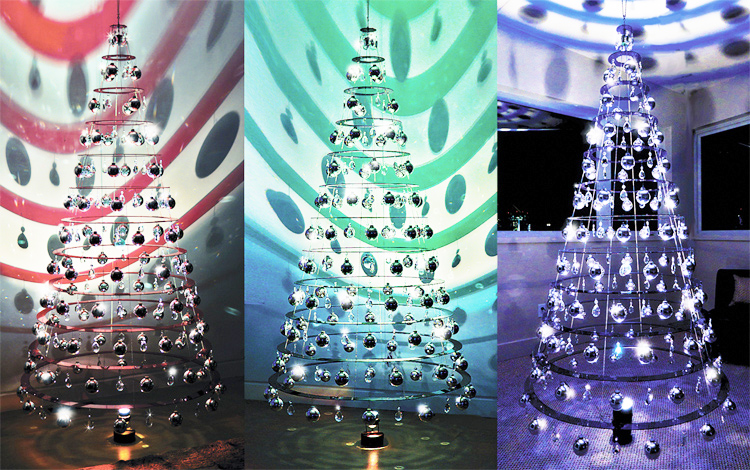Magical Modern Tradition
 |
|
|
When it comes to the holidays, 'tradition' rules. But that word can mean all kinds of things.
We think of a traditional Christmas tree as one cut from the forest, draped in lights, and sparkling with ornaments. But that doesn't hold true for everyone.
Matthew Bliss, for one, grew up gathering with his family around a series of ultra-modern acrylic trees designed by his grandfather, Lawrence 'Bud' Stoecker. They cast light and shadows around the room and seemed to glow with a magical quality.
Now Bliss, 37, is bringing that design to the public through his homegrown company Modern Christmas Trees, based in Denver.
Stoecker, an engineer who made a career out of building modernesque A-frame cabins in the Colorado mountains, started building 'trees' for his family in the mid-1950s.
Steeped in the aesthetic trends of the time, Stoecker conceived of the homemade tree as a way to bring his family a bit of unique Christmas cheer while saving a few bucks on live trees bound eventually for the trash.
He brought it together using a series of rings of graduating size, strung together with bead chains, that formed a tree shape when they were hung from a pole or the ceiling.
"It's always been one of my favorite memories, spending Christmas Eve over at their place," Bliss says of his childhood visits to his grandparents' place, which started in the 1970s.
"I guess my earliest memories were just being in awe of it. My grandfather would put our heads under the tree, me and my two brothers, and we would look up, and he would slowly rotate the tree. He was definitely proud of it."
Stoecker's design pre-dated by several years the aluminum trees that would sweep the nation starting in 1959.
But Stoecker wasn't building for the nation. He was building for his family and himself, modifying his design with each passing year but keeping true to the graduated-circle construction that could be packed away in a flat box until the following Christmas. It's a concept whose commercial potential Bliss would come to realize later.
"A lot of it [my decision to eventually market the trees] had to do with honoring my grandfather," Bliss says. "I thought the tree was beautiful, but also my grandmother had just passed away. He was depressed and suffering from Alzheimer's.




